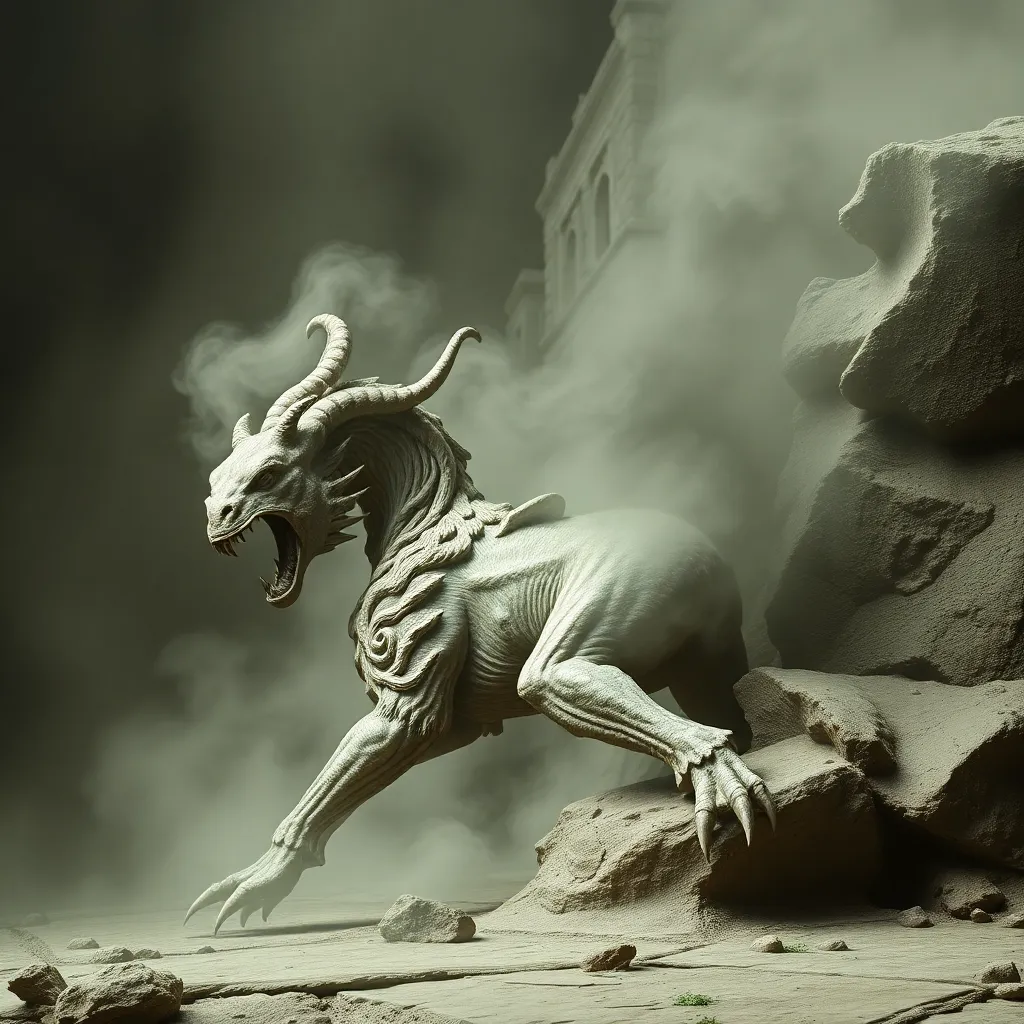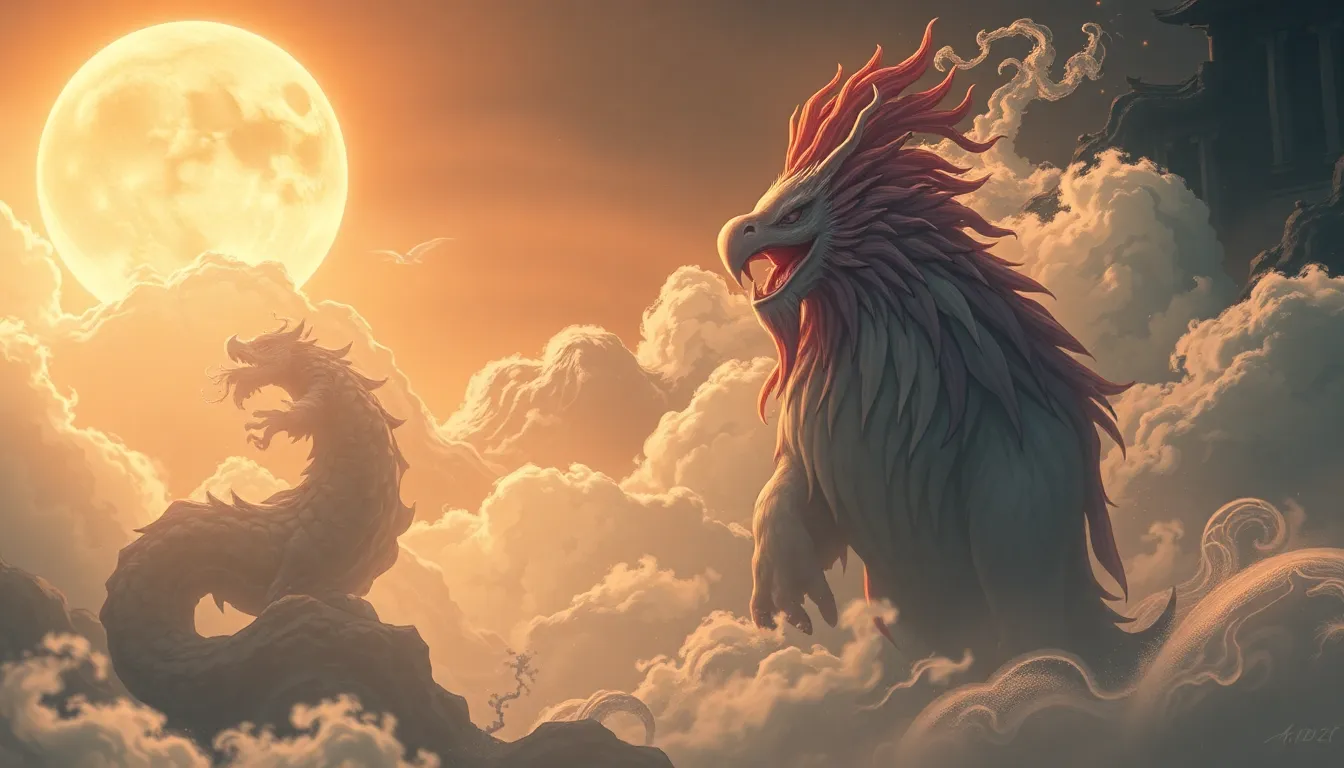Manticore in Ancient Greek Mythology: A Forgotten Beast?
I. Introduction
The Manticore is a fascinating creature from ancient mythology, often depicted as a fearsome beast with a lion’s body, a human head, and a tail that resembles a scorpion or dragon. This hybrid creature has captured the imagination of many cultures throughout history, yet it remains relatively obscure compared to other mythological figures.
In ancient mythology, the Manticore served as a symbol of danger and the unknown, embodying the fears of the people who told its tales. The purpose of this article is to delve into the Manticore’s origins, its characteristics, its role in ancient literature, and its lasting legacy in modern culture.
II. Origins of the Manticore
A. Historical accounts and earliest references
The Manticore first appeared in ancient texts, with its earliest references found in Persian lore. The name “Manticore” is derived from the Persian term “Martikhoras,” which translates to “man-eater.” Historical accounts suggest that the creature was feared for its predatory nature and its ability to hunt humans.
B. Cultural influences on the Manticore’s depiction
Over time, the Manticore’s image was influenced by various cultures, particularly through the lens of Greek and Roman interpretations. As these cultures encountered Persian mythology, they adapted the characteristics of the Manticore to fit their narratives, emphasizing its monstrous features and terrifying abilities.
C. Comparison with other mythological creatures
The Manticore shares similarities with other mythological hybrids, such as the Chimera and the Griffin. Like the Manticore, these creatures embody traits from multiple animals, showcasing the ancient world’s fascination with blending characteristics to create new beings.
III. Physical Description and Characteristics
A. Traditional imagery and attributes
Traditionally, the Manticore is depicted as having:
- A lion’s body, symbolizing strength and power
- A human head, representing intelligence and cunning
- A scorpion-like tail, capable of delivering a deadly sting
B. Symbolism of the Manticore’s features
Each aspect of the Manticore’s form carries symbolic weight. The lion signifies bravery and ferocity, the human head suggests intellect and malice, and the tail reflects danger and treachery. Together, these features create a composite creature that embodies the complexities of fear and power.
C. Variations in descriptions across different sources
Descriptions of the Manticore can vary significantly across texts. Some sources depict it as a purely monstrous entity, while others imbue it with a more nuanced role, acting as a guardian of sacred spaces or a symbol of retribution.
IV. The Manticore in Ancient Literature
A. Key literary works that mention the Manticore
The Manticore appears in several ancient texts, including:
- The writings of Herodotus, where he recounts tales of strange creatures from distant lands.
- Medieval bestiaries, where the Manticore is often included in discussions of mythical beasts.
- Various Greek tragedies, where the creature serves as a metaphor for human fears.
B. Analysis of the Manticore’s role in these texts
In literature, the Manticore often symbolizes the dangers lurking beyond the known world. Its portrayal as a fearsome predator reflects the anxieties of ancient societies about the wilderness and the unknown. In some instances, it serves as a cautionary tale about hubris and the consequences of ignoring the perils of life.
C. The evolution of its portrayal over time
As literature progressed through the ages, the Manticore’s depiction evolved. Initially seen as a terrifying beast, it gradually became a more nuanced character, often representing deeper psychological fears or societal issues. This evolution mirrors changes in cultural attitudes toward the unknown and the monstrous.
V. The Manticore’s Place in Ancient Greek Culture
A. The Manticore’s significance in Greek folklore
In Greek folklore, the Manticore held a significant place as a creature of fear. It was often used as a cautionary figure in stories meant to teach moral lessons about bravery, wisdom, and the dangers of underestimating one’s foes.
B. The creature’s influence on art and architecture
The Manticore also influenced ancient art, appearing in sculptures, pottery, and mosaics. Artists used its image to evoke emotions and convey themes of danger and mystery, allowing the Manticore to permeate the aesthetic landscape of the time.
C. The Manticore in the context of ancient beliefs and values
The creature’s presence in Greek culture underscores the values of the society, emphasizing the importance of understanding and respecting the natural world and its dangers. The Manticore, as a representation of the unknown, served as a reminder of the limits of human understanding.
VI. The Manticore’s Legacy in Modern Culture
A. References to the Manticore in contemporary literature and media
In modern times, the Manticore has resurfaced in various forms of literature and media. It appears in fantasy novels, films, and television series, often as a formidable antagonist that heroes must confront.
B. The creature’s impact on modern fantasy and role-playing games
The Manticore has become a staple in fantasy role-playing games, such as Dungeons & Dragons, where it is presented as a fearsome monster that players can encounter. Its attributes make it an exciting challenge for adventurers, adding depth to the game’s mythology.
C. The Manticore’s resurgence in popular culture
Recent years have seen a resurgence of interest in the Manticore, with references in graphic novels and video games. This revival highlights the enduring appeal of mythological creatures and their ability to resonate with contemporary audiences.
VII. Mythological Analysis and Interpretations
A. The Manticore as a symbol of fear and the unknown
Mythologically, the Manticore represents the fear of the unknown and the dangers that lie beyond human comprehension. Its terrifying characteristics evoke primal fears that resonate across cultures and time.
B. Psychological interpretations of the creature
Psychologically, the Manticore can be viewed as a manifestation of internal fears and anxieties. It embodies the complexities of human emotions and the often tumultuous relationship individuals have with their fears.
C. The Manticore’s relevance in discussions of myth and morality
The Manticore’s narratives often contain moral lessons about hubris, respect for nature, and the consequences of one’s actions. These themes remain relevant in modern discussions about ethics and morality, highlighting the timeless nature of mythological stories.
VIII. Conclusion
In summary, the Manticore stands as a significant figure in ancient mythology, embodying the fears and complexities of the human experience. Its historical and cultural significance spans centuries, influencing literature, art, and modern media.
Preserving mythological narratives like that of the Manticore is crucial for understanding cultural heritage and the shared human experience. As a “forgotten beast,” the Manticore still holds relevance today, reminding us of the fears that persist in our collective consciousness and the importance of confronting the unknown.



